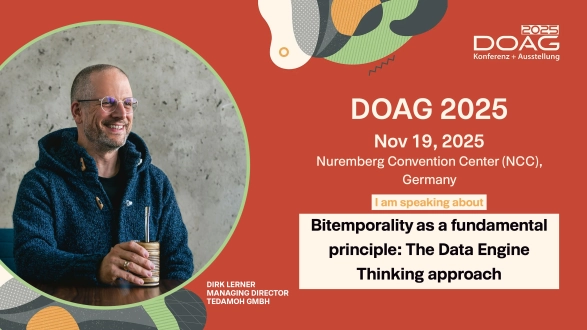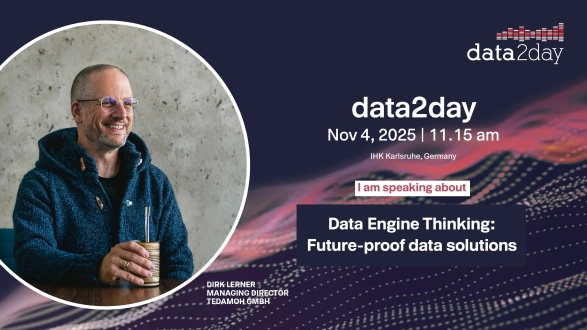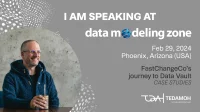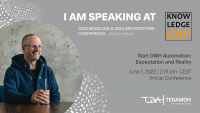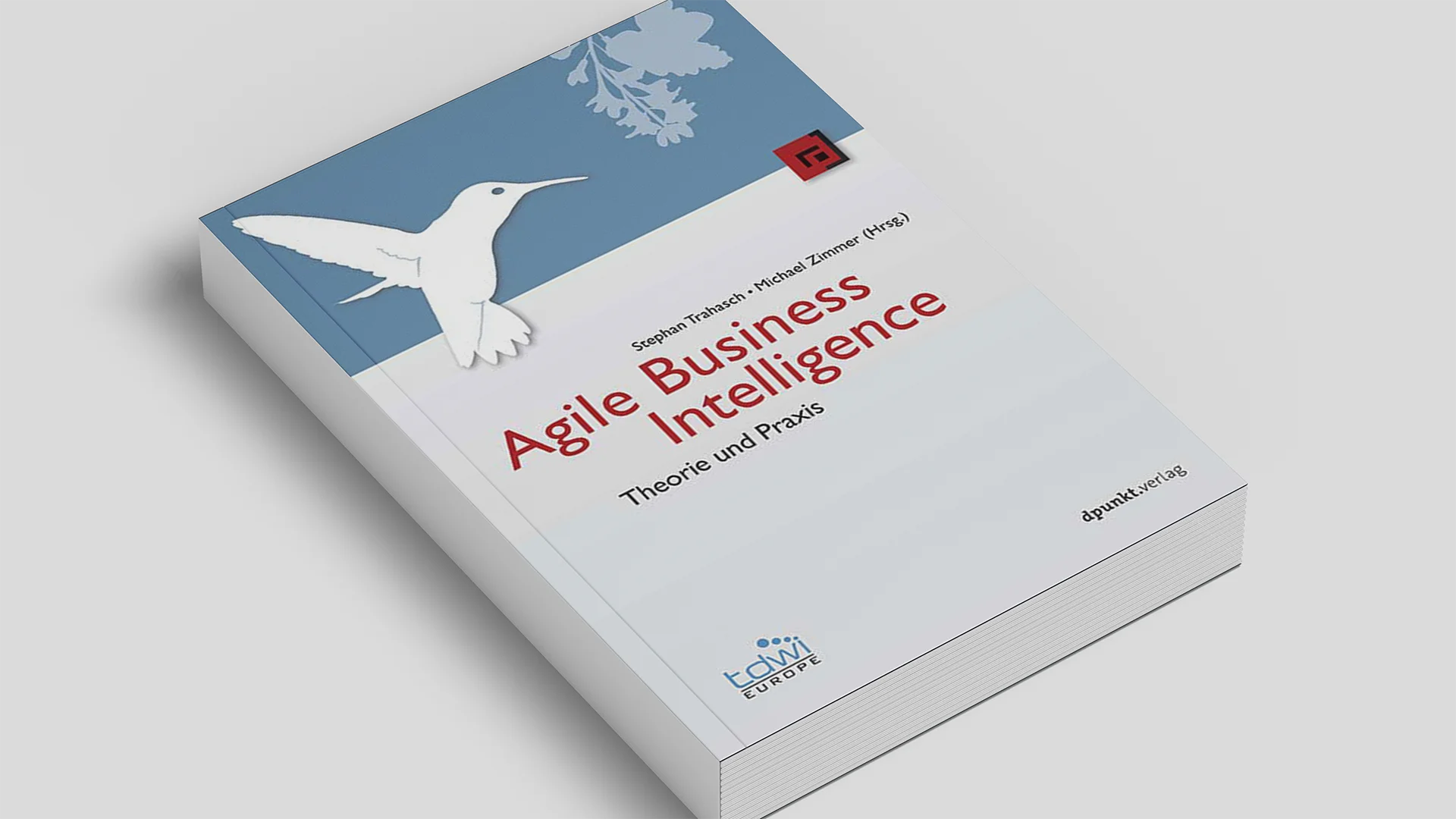/ tedamoh
Coaching,
Academy &
Consulting.
A new data model for the data warehouse is necessary, but how do you model data? Understanding temporal data and learning methods and techniques to do so? Or a certification in data modeling?
We support you with coaching, our academy or with consulting!!


/ NEWS
Get the latest updates
Our latest updates of all categories - including our blog articles.
Book me as a Data Vault & Data Warehouse Speaker | Upcoming Talks 2025
As co-author of the international bestseller Data Engine Thinking (together with Roelant Vos), internationally recognized Data Vault expert, and highly requested speaker, I bring over 25 years of experience in data modeling and temporal data to the stage. Discover my upcoming lectures on Data Engine Thinking, Data Vault, Data Warehouse Automation, and BI architectures—practical insights from the bestseller that will help your team move forward.
🎯 Book a speaker for your event now:
✓ Custom keynotes & workshops on Data Vault, temporal data, and data warehouse automation
✓ FastChangeCo case study live: From rigid to flexible data platforms
✓ Data Engine Thinking methodology: End-to-end adaptive data solutions
✓ Data solution, design patterns & solution patterns – practical knowledge from the bestseller
✓ Data vault, temporal data & DWH automation in practice
✓ Co-author insights from Lerner & Vos
📧 Contact for booking inquiries: Contact request | Book an appointment
💡 Bonus: Individual keynotes & workshops + signed copies of Data Engine Thinking for all participants!
Conference: DDVUG Herbsttagung 2025
Date: November 27, 2025 - Time: 11:00 a.m.
Location: Novotel Hannover, Germany
Presentation: Data Vault End-Dating Satellites on a Link: Variants, Options, and Data Engine Thinking
Speaker: Dirk Lerner
Data Vault End-Dating Satellites on a Link pose a particular challenge in data modeling. This presentation introduces various variants and options for the physical implementation of such structures and uses concrete examples to show how complexity can be significantly reduced during loading.
International bestselling author & speaker | 100+ successful presentations worldwide
From data2day to the Data Modeling Zone to DDVUG – over 50 companies and international conferences already rely on my expertise as co-author (with Roelant Vos) of “Data Engine Thinking” and Data Vault speaker. Proven best-selling methods that have been shown to transform data teams.
✓ Over 2,000+ enthusiastic participants internationally
✓ Data Engine Thinking features in all presentations
✓ Proven topics: Data Vault, temporal data, DWH automation, FastChangeCo Journey
✓ Formats: Keynotes, workshops, company training
✓ Bonus: Signed copies of the book & exclusive co-author insights
⭐ 4.7/5 stars Amazon bestseller | Available worldwide
🌍 Co-author team: Dirk Lerner (DE) & Roelant Vos (AU/NL)
Conference: DOAG 2025
Date: November 19, 2025 - Time: 10:00 a.m.
Location: Nuremberg Convention Center (NCC), Germany
Presentation: Bitemporality as a fundamental principle: The Data Engine Thinking approach
Speaker: Dirk Lerner
Temporal data is essential for modern data solutions. This session demonstrates how Data Engine Thinking facilitates the implementation of bitemporal data—not only as a technical feature, but as an integral part of the Data Engine approach.
Conference: data2day
Date: November 4, 2025 - Time: 11:15 a.m.
Location: IHK Karlsruhe, Germany
Presentation: Data Engine Thinking: Future-proof data solutions
Speaker: Dirk Lerner
Data tells stories – if you understand it in the right context. Often, however, it remains just “ stuff” that we cannot use meaningfully. Data Engine Thinking wants to change that: It is about developing data solutions that are flexible, robust, and adaptable – just like the requirements that challenge companies every day.
Conference: Reporting Summit 2025
Date: October 16, 2025 - Time: 6:30 p.m.
Location: metafinanz, Munich, Germany
Presentation: Data modeling with Data Vault - Special on data modeling
Speaker: Dirk Lerner
Data Vault is a modern modeling method for data solutions that enables scalability, flexibility, and traceability. This session teaches the basics of Data Vault. Perfect for beginners who want to design future-proof data-driven solutions and make the most of their data's potential.
Conference: Global Data Summit 2025
Date: June 23, 2025 - Time: 10:20 - 10:40 AM
Location: Harpa Concert Hall and Conference Centre - Reykjavík, Iceland
Presentation: Data Engine Thinking
Speaker: Dirk Lerner
Data tells stories – when understood in the right context. However, it often remains just "stuff" that we cannot use meaningfully. Data Engine Thinking aims to change this: It's about developing data solutions that are flexible, robust, and adaptable – just like the requirements that challenge businesses daily.
FastChangeCo’s journey to Data Vault
FastChangeCo is a fictitious company founded in the early 20th century.
Struggling with today's much more rapidly changing business requirements and dealing with more and more changes in source systems, FastChangeCo repeatedly tried to extend the data warehouse with state-of-the-art technologies to handle all these changes. But at the end of the day, they were not able to keep up with the ambitious goals to meet all the requirements.
In order to meet all these requirements, FastChangeCo decided to create a high-level vision - a goal against which they'll double-check all decisions in the upcoming project. The vision is to be more flexible, more agile, faster and less complex in all upcoming decisions, tasks and implementations.
Expectations and reality
How can recurring tasks be simplified? The question of how to automate data logistics processes in a data warehouse occupies project teams today. The desire for a comprehensive automation product is then usually very quick. The expectations are high, the disappointment (after the product selection) not uncommon.In this session, Dirk Lerner gives an insight into the expectations of the project teams, the processes of product selection and the reality.
Expectations and Reality
Today, quite a few data warehouse (data solution) project teams are thinking about automating their data logistics processes. How can you simplify the same tasks, leave these processes to an automatism and at the same time put as little repetitive effort as possible into the development? The demand for an end-to-end automation product for the data solution is then usually very quick to arise.
What exactly is temporal data? In this session, Dirk Lerner provides insight into what temporal data is and why data is a matter of time for certain business scenarios.
With simple examples, Dirk uses these business scenarios to visualize the differences in temporal approaches to historizing data and their implications.
Finally, Dirk Lerner presents the technologies available today that have implemented (bitemporal) historization of data.
Many data warehouse project teams today are considering the automation of processes. How can you simplify the same tasks over and over again, leave them to an automatism and put as little permanent effort into development as possible? The desire for a solution, an automation tool, is then usually very quickly present.
In this session Dirk Lerner will give an insight into bitemporal data use cases and why they are important and fundamental to today's business requirements. Afterwards he visualizes the procedure of bitemporal historization of data using a simple example. Finally, Dirk presents the available technologies that have already implemented a (bitemporal) historization of data.
An important milestone has been reached!
With the launch of our book website, Roelant Vos and I are entering the final phase of completing our joint book
In 2015, I contributed - spontaneously - a chapter to a book for the second time. Working on it was a lot of fun. That's partly because of the topic, but also because of the great editorial team.

Read more …As a long-standing partner of TEDAMOH, we would like to express our enthusiasm and appreciation for the cooperation in our Smart Factory project. One of our outstanding achievements was the successful implementation of a fully automated production line at our plant in Bamberg.

Read more …First of all, I would like to emphasize that preparing for the DMC was a challenging but absolutely rewarding experience. In order to pass the exam successfully, I focused on different methods:

Read more …The training is highly recommended because the complexity and added value of modelling becomes clear. It is also comprehensive and covers all aspects of modelling. Everyone benefits from modelling!

Read more …As a result, the team's knowledge, identification with, and trust in the data model are at a high level. This is very good, because we are facing great challenges on our way to becoming a data-driven company.


